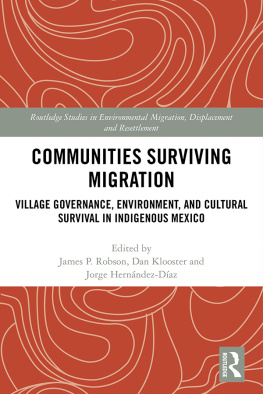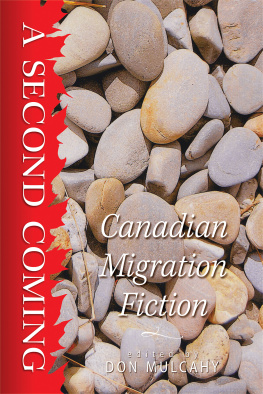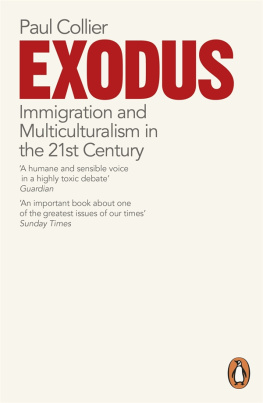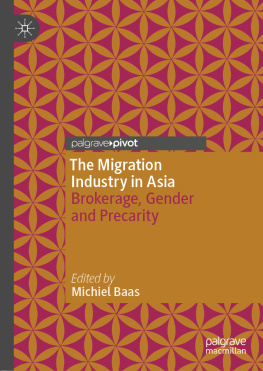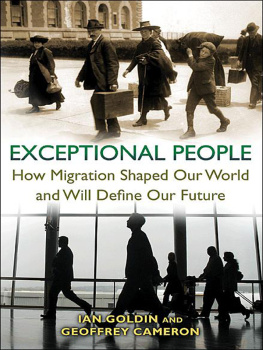About the Book and Author
Migration among the Bassari people of eastern Senegal has produced an apparent paradox: villages are experiencing rapid and profound change as they are being incorporated into larger national structures and, at the same time, village institutions remain largely untouched. In this book, Dr. Nolan examines both the causes and consequences of migration from the Bassari village of Etyolo. Through extensive fieldwork spanning eight years, he shows how rural and urban areas have interacted over time. Although levels of both seasonal and long-term migration have become substantial, agricultural productivity remains stable and traditional practices persist.
Dr. Nolan explains how the effects of migration have been controlled and shaped and discusses how migration may even have strengthened the village power structure. Returning migrants contribute cash and goods to the village economy but do not act as dissidents or innovators. However, Dr. Nolan points to adverse effects migration may have in the future and indicates what the first signs of strfss may be.
Riall W. Nolan is a development anthropologist and senior faculty member, Program in Intercultural Management, School for International Training, Brattleboro, Vermont.
First published 1986 by Westview Press
Published 2018 by Routledge
52 Vanderbilt Avenue, New York, NY 10017
2 Park Square, Milton Park, Abingdon, Oxon OX14 4RN
Routledge is an imprint of the Taylor & Francis Group, an informa business
Copyright 1986 by Taylor & Francis
All rights reserved. No part of this book may be reprinted or reproduced or utilised in any form or by any electronic, mechanical, or other means, now known or hereafter invented, including photocopying and recording, or in any information storage or retrieval system, without permission in writing from the publishers.
Notice:
Product or corporate names may be trademarks or registered trademarks, and are used only for identification and explanation without intent to infringe.
Library of Congress Cataloging-in-Publication Data
Nolan, Riall W.
Bassari migrations.
(Westview special studies on Africa)
Bibliography: p.
1. Bassari (Senegal-Guinea people)--Social conditions.
2. Bassari (Senegal-Guinea people)--Economic conditions.
3. Migration, Internal--Senegal--Case studies.
4. Acculturation--Senegal--Case studies. I. Title.
II. Series.
DT549.45.B37N65 1986 306'.08996 86-19054
Composition for this book was provided by the author.
This book was produced without formal editing by the publisher.
ISBN 13: 978-0-367-01169-7 (hbk)
This book is about how a Bassari village is being incorporated into larger national structures in Senegal through seasonal and long-term migration. The data come from two field investigations in Eastern Senegal during 1970-72 and 1977-78. The first of these concerned migration's effects on the village of Etyolo. The second, five years later, focused on the regional capital of Tambacounda, and how long-term Bassari migrants were adjusting to urban life there.
The study centers mainly around these two places and their relationship as a result of migration. Unless otherwise noted, 1971 is taken as the ethnographic present. Although both Etyolo and Tambacounda are real places, I have altered the names of many of their inhabitants to protect their privacy.
Bassari society is structured according to several different principles, of which the most important are sex and age. Although as a privileged outsider I was able to transcend these structural boundaries fairly frequently, my status as a younger male--I was 28 when I began work in Etyolo--inevitably influenced the kinds of data I collected. One consequence of this is that the descriptions in this book are largely male-centered. This fact strikes me as regrettable but well-nigh inevitable, given the context in which I worked.
I collected data in four Senegalese languages--Bassari, Wolof, Fula and French. The latter three predominated early in fieldwork, while I was still learning Bassari. Indeed, it was not until my second field trip (1977-78) that I managed to achieve what I consider acceptable fluency in Bassari. In translating informants' statements, I have tried to provide clear, idiomatic glosses, adding the original words only when it seemed necessary. Translations from French documents are my own.
For simplicity's sake, I have used a modified phonetic system to write Bassari (o-nian ) in this book. More accurate transcriptions and numerous details of the structure of Bassari can be found in Ferry (1968, 1971).
The system I have used is as follows:
- e = like the French
- ' = a sound like 'uh' in English. The word b'lian is therefore pronounced buh-lee-ann.
- x = a harsh sound as in the German 'Bach' or the Scottish 'loch'.
- ty = a 'ch' sound as in 'church'
- dy = as in 'John' or 'Djibouti'
- ny = as in 'o ni on'
- sy = a 'sh' sound as in 'shoot'
- ng = as in the German 'Finger'
Thanks are due to the many individuals and institutions whose help made this book possible. Field investigations were funded by grants from the Foreign Area Fellowship Program (1970-72) and the Ford/Rockefeller Foundations' Research Program on Population and Development Policy (1977-78). Both grants are gratefully acknowledged.
In Dakar, Pierre Fougeyrollas and Abdoulaye Bara Diop of the IFAN provided much helpful assistance during fieldwork. Gary Engleberg provided shelter, advice and encouragement on numerous occasions. In the field, the Catholic and Protestant missions of Kedougou, Tambacounda and Gubadji provided both moral and material support at several points. Daniel and Mary Pelcot and Jim and Louise Stanley all deserve my special and heartfelt thanks.
Senegalese government officials at all levels went far out of their way to provide documents and information on a variety of subjects. I would particularly like to thank Abdoulaye Diop and Amadou Bamba N'Diaye of Kedougou, Maridiane Savane and Mamadou Ba M'Baye of Tambacounda, and Messrs. Singat and Fofana of Salemata. I am also indebted to Bassirou Bathily, Etyolo's schoolmaster during 1970-72, for companionship and hospitality.
The personnel of the Centre de Recherches Anthropologiques at the Muse de 1'Homme in Paris deserve my sincere thanks. They provided information, hospitality and encouragement at many points, both in the field and in Paris. I would especially like to thank Monique Gessain, Marie-Paule Ferry, and--posthumously--Jacques Gomila for their help and companionship.
An early draft of this book was completed at the University of California at Berkeley in 1978-79. Members of the Anthropology Department there graciously extended their facilities and their friendship. I am especially grateful for the help of Bill Simmons, who read and offered comments on the first draft.



